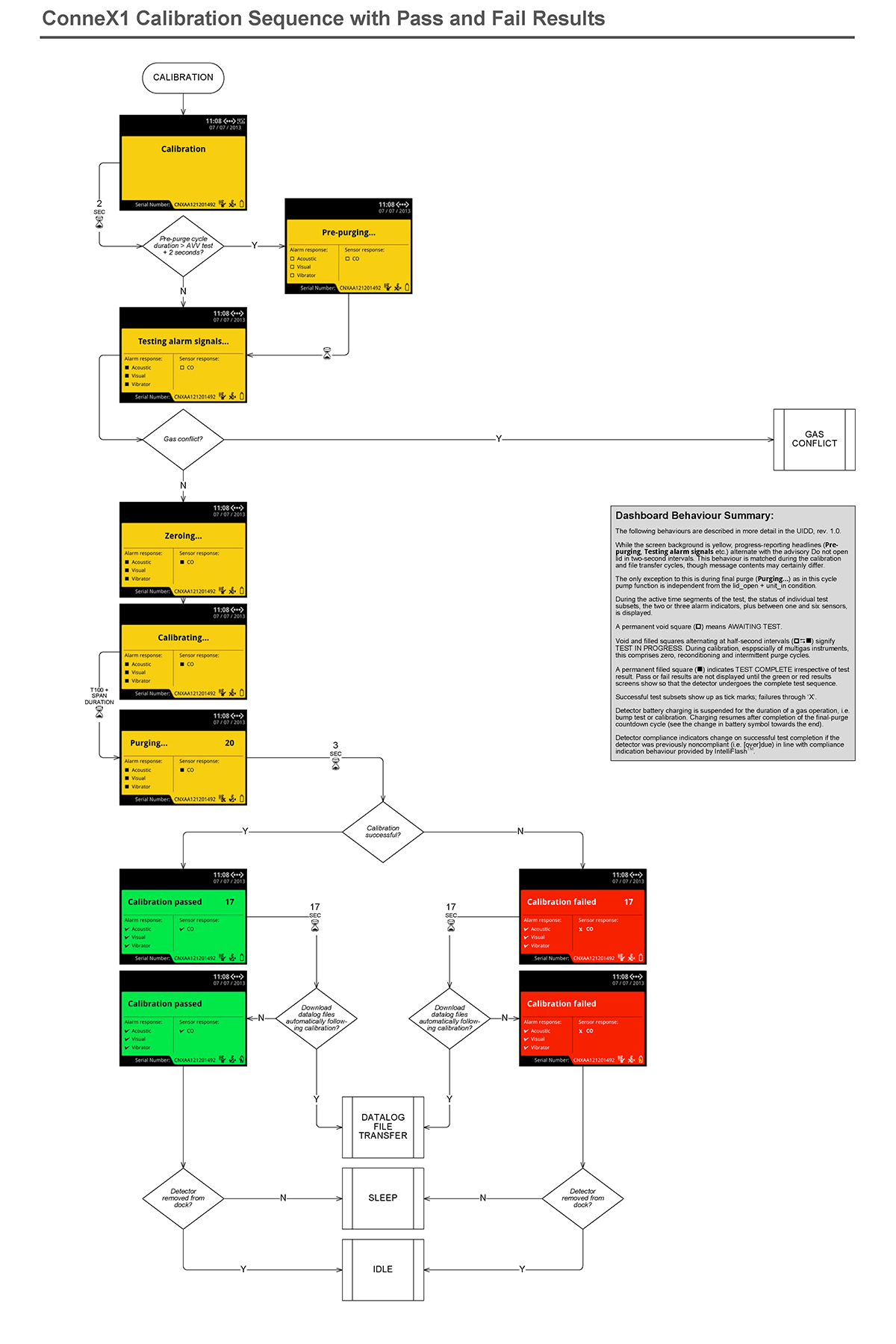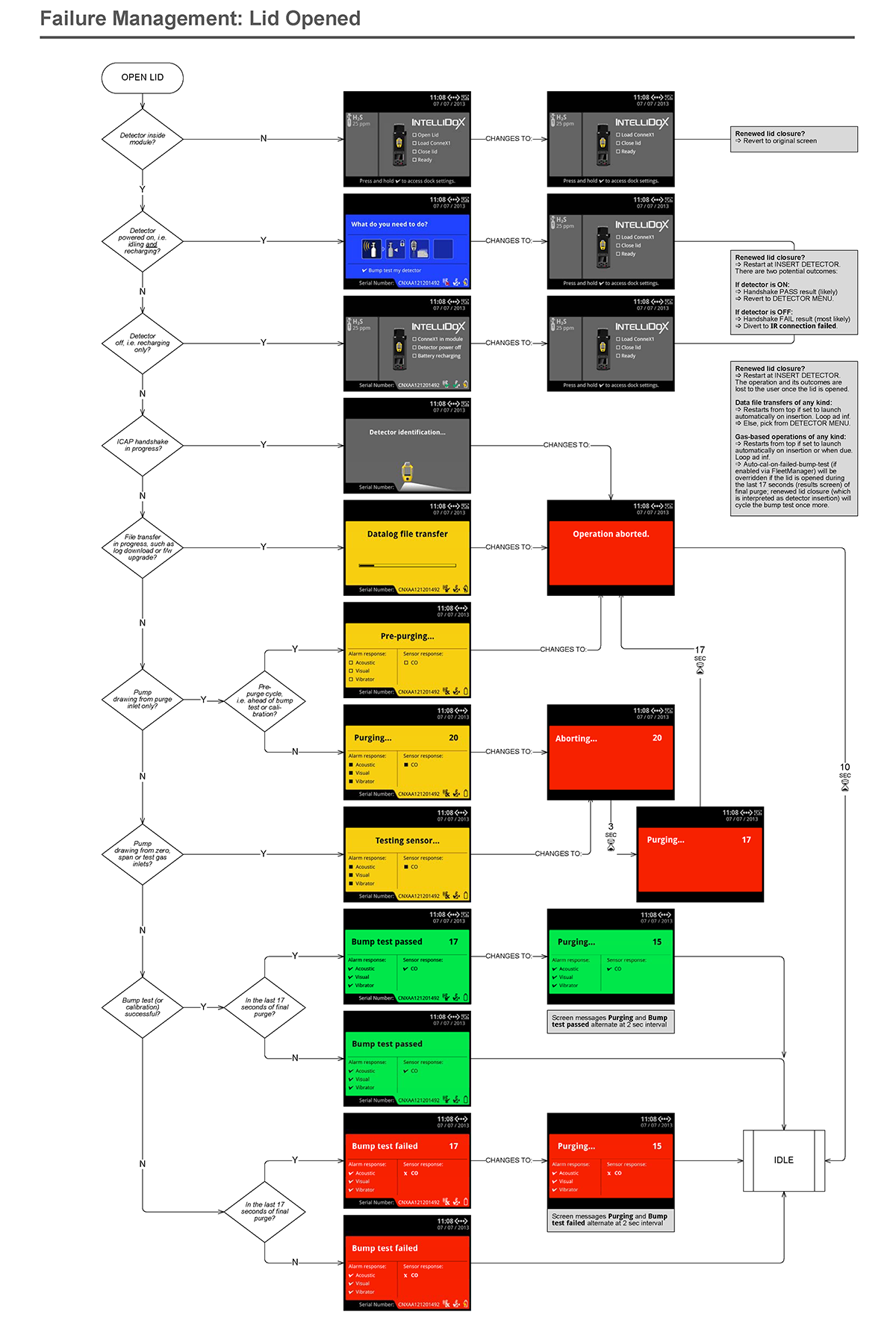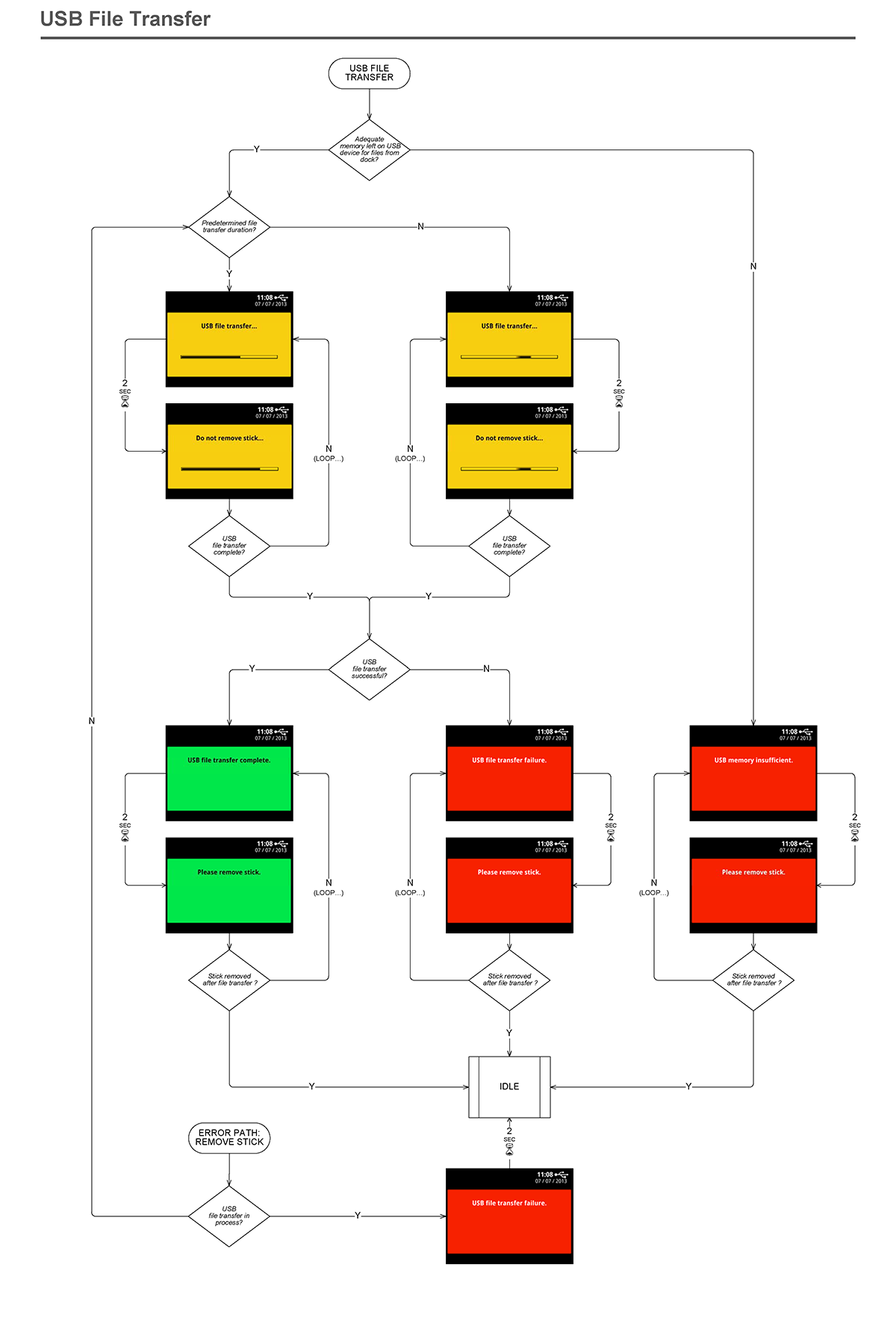IntelliDoX - Second Generation Docking System
The Product
IntelliDoX is the second-generation gas detector docking system by BW Technologies' by Honeywell. It was developed specifically to address critical system architecture gaps inherent to the older MicroDock-II system. Among the innovations offered by IntelliDoX over MicroDock are network capability, with greater freedom of scale, and a significantly richer user interface as each module features a 320 x 240 px, 16-bit colour screen and six navigation keys. Several factors precluded use of a touchscreen, tough compelling from an interaction design viewpoint.
The system is modular on a non-hierarchical basis: Individual modules no longer depend on a master module but operate autonomously, as single entities or ganged into an array of up to five with shared, common test gas and power bus. Ganged modules retain individual IP addresses, thus the network does not distinguish between standalone and ganged IntelliDoX modules.
Interface Design
I designed IntelliDoX's user interface from information architecture and user flows to redlined screen layout, visual design and iconography, working with the senior engineer in charge of embedded-firmware front-end development, prototyping select UI components for evaluation by users. The UI design responds to several feedback points from the customer base:
- Clear status indication. The UI pattern structure uses a traffic-light paradigm to denote in-progress (yellow: Watch), success (green: Pass), and failure status (red: Halt).
An operation performed on a detector can take several minutes during which the operator may temporarily walk away. Coarse, need-to-know indicators are peripherally visible to the returning operator without initial attention to the displayed message. Colours are specified so as to result in meaningfully distinct hues to people with protanopia / deuteranopia.
- Sparing use of icons. Verbal contents matter when something warrants closer attention. An operator will seek telephone rapport with a supervisor in case of anomalies.
This verbal interaction is assisted by explicit text messages that 'spell out' the situation at hand. Symbols or icons, though translation and space friendly, cause friction in such exchanges due to higher interpretive leeway until mentally encoded from repetition over time, or formal conventions: Road signage has had decades of proliferation, much helped by laws.
- Automated operation. Although a keypad is provided, day-to-day usage of IntelliDoX requires few button presses.
Most operations servicing gas detectors are automated through fleet management software commands, and run their course on loading a device into the receptacle and closing the lid. The display sequence provides exact feedback to the automated task at hand. Where feasible, remaining task duration is indicated via countdown or progress bars.












